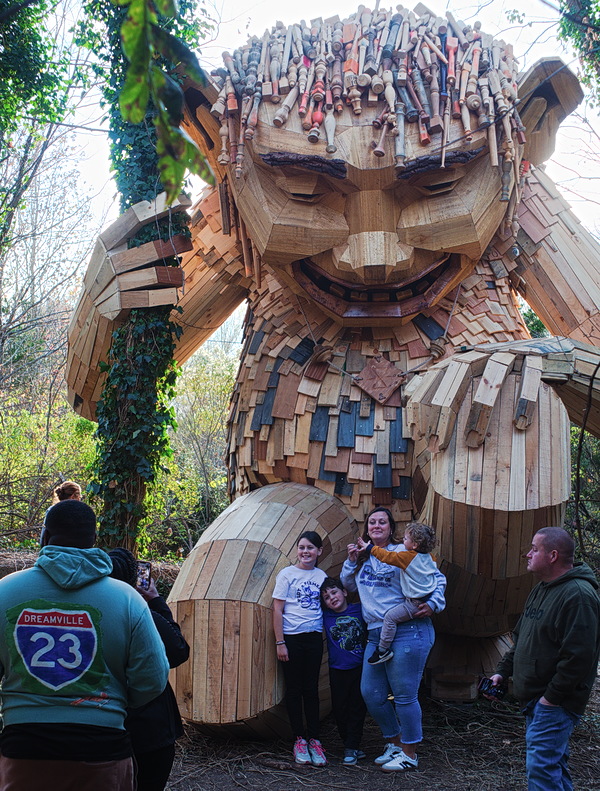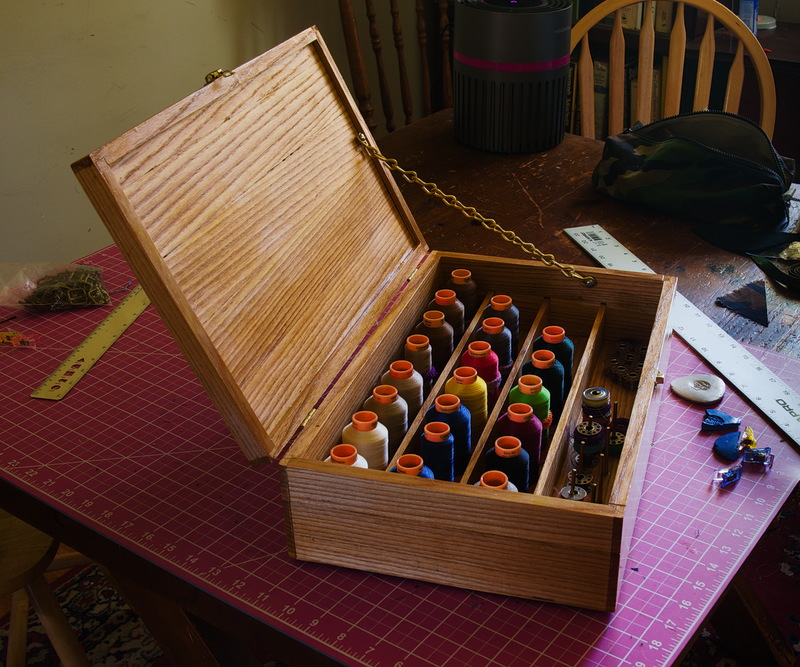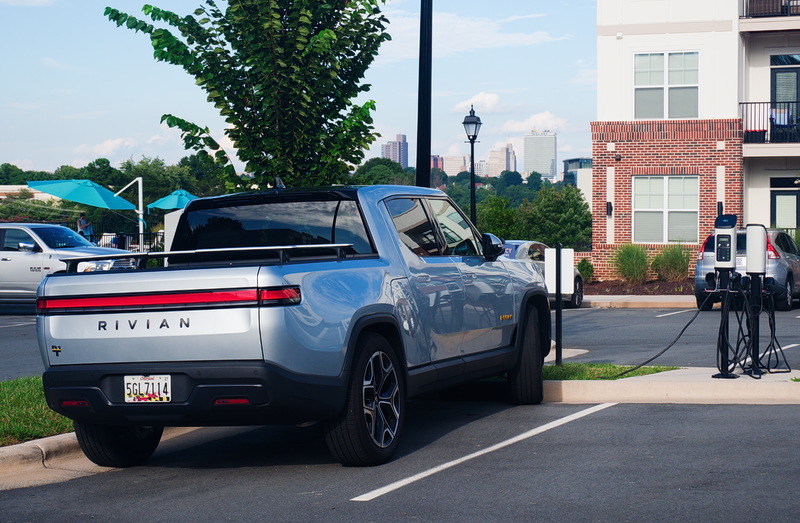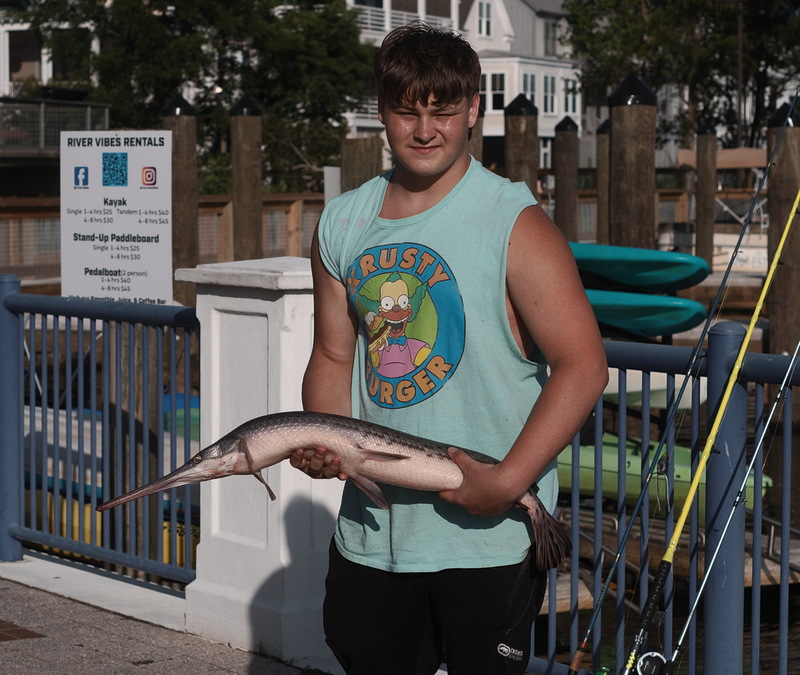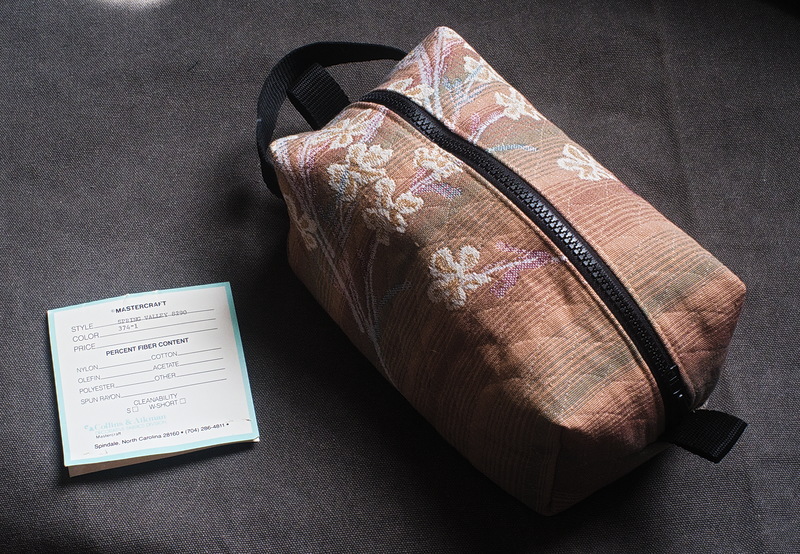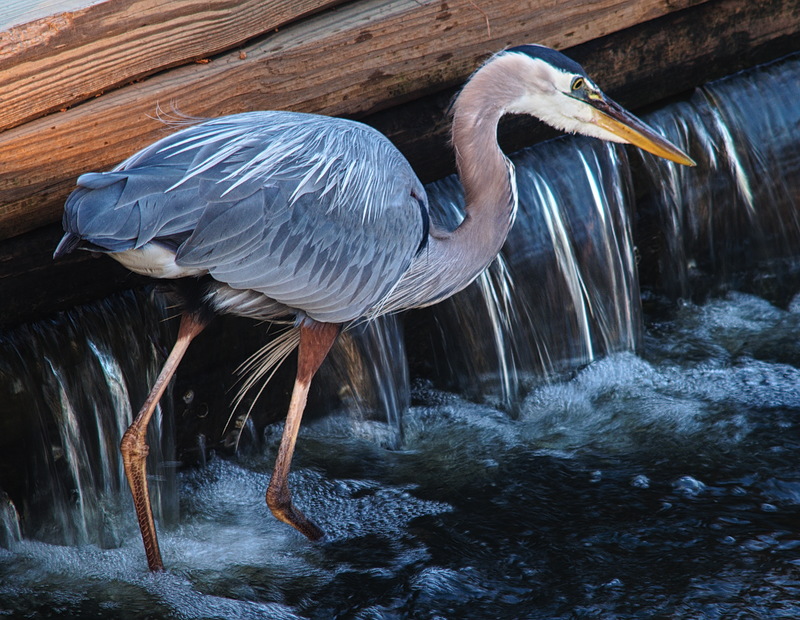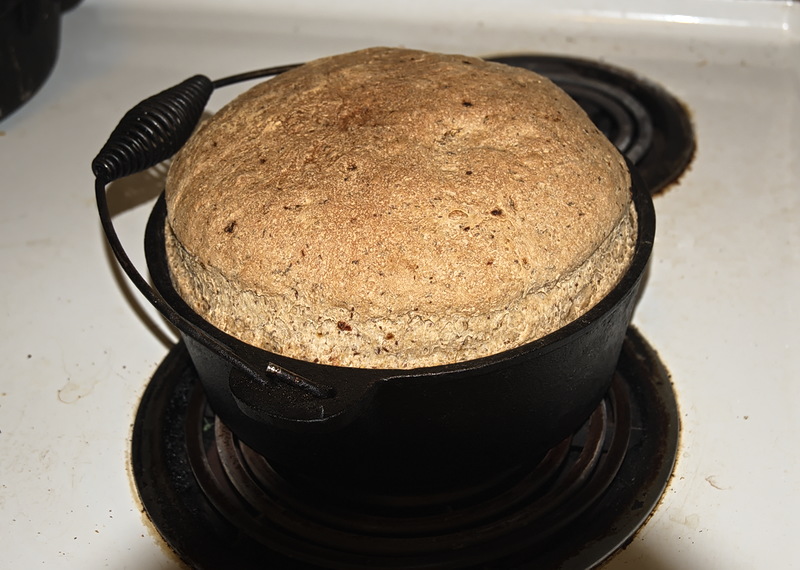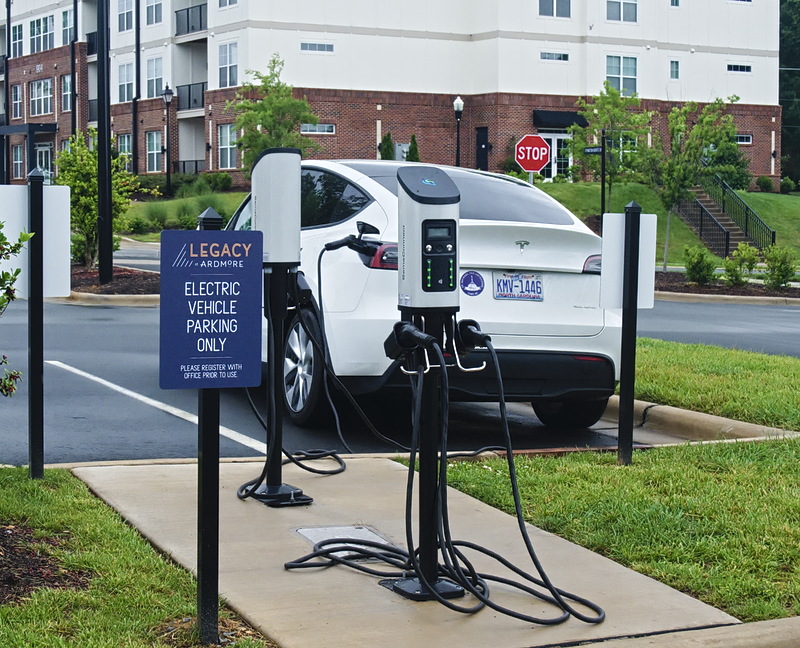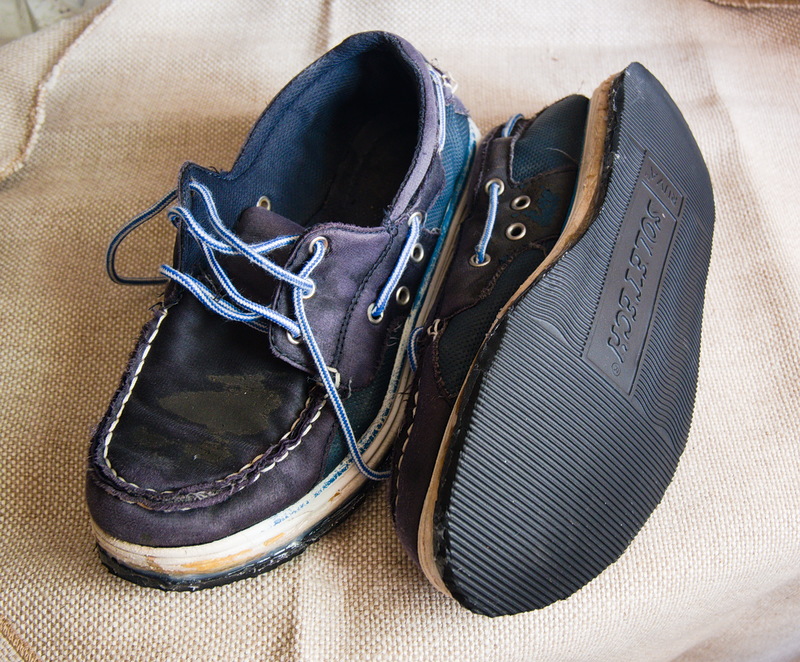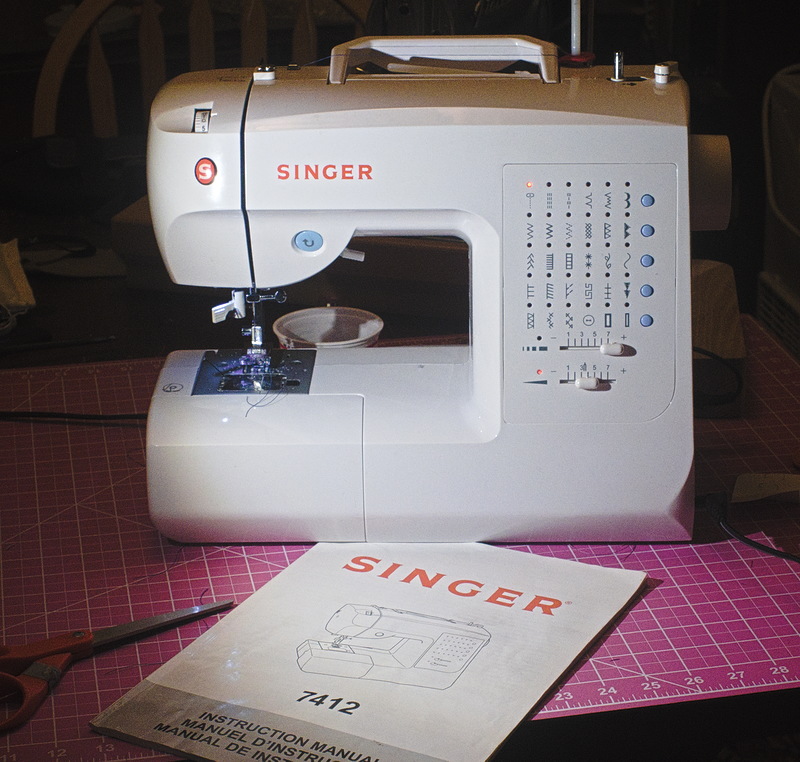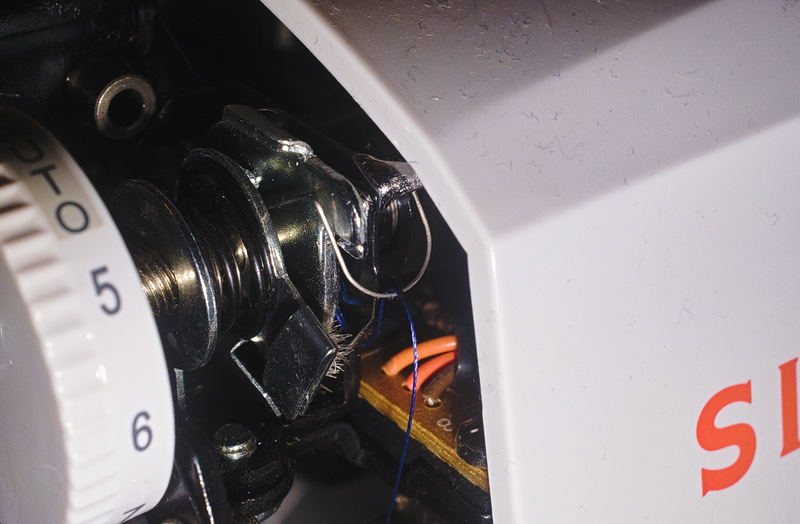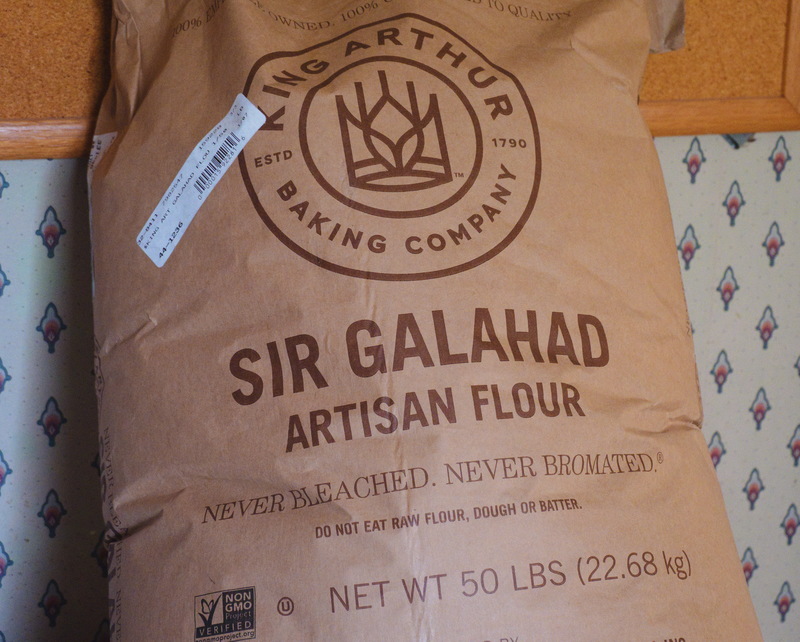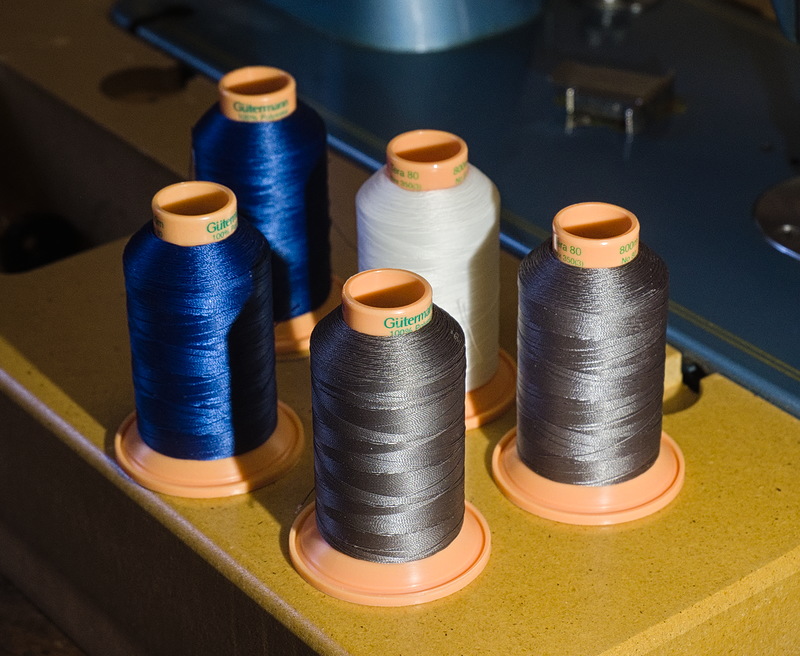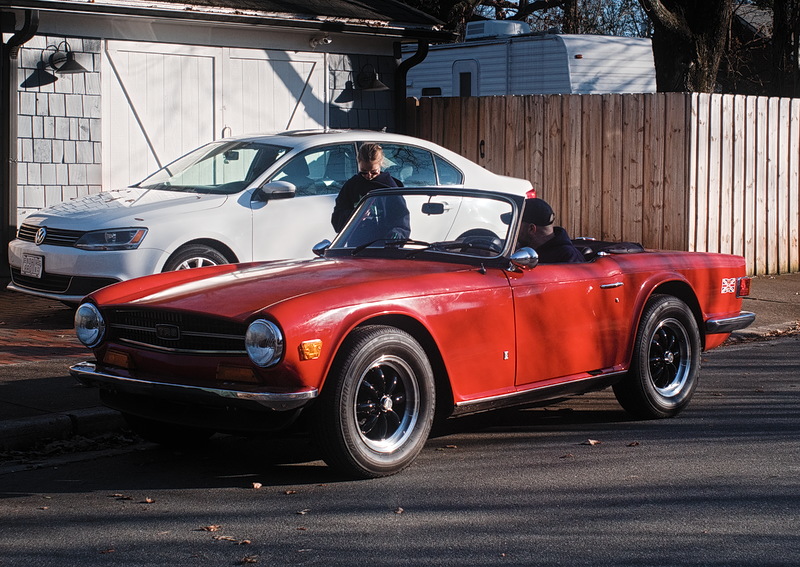Paul's Miscellany
All photographs by Paul M. Clayton unless otherwise noted. Click on a picture to see it larger.
This is the current page, posts from 1/1/25 through today.
Older posts -
- 9/4/23 through 12/17/24.
- 7/22/22 through 8/22/23.
- 9/15/21 through 7/18/22.
- 10/27/20 through 9/14/21.
- 5/13/20 through 10/23/20
- 10/1/19 through 5/12/20
- 2/28/19 through 9/30/19
- 9/1/18 through 2/27/19
- 3/1/18 through 8/31/18
Sally the Troll
Posted 11/18/25Danish artist Thomas Dambo makes giant sculptures that he calls trolls out of recycled materials. So far he and his crew, often with help from local artisans, have built over 170 of them in 20 countries as part of his "Trail of a Thousand Trolls" project. North Carolina has been favored with at least seven, five in the Raleigh area, one in Charlotte, and a brand new one in High Point. When Lars and I visited it earlier today, we found it swarmed with people, but evidently nothing like the first few days when there were lines of up to an hour to see it. The sculpture is in a small area hacked out of the brush surrounding an abandoned factory site. Parking is in a small dirt lot on Grimes Street nearby. There is no signage on the street, but it is easy to find by the constant stream of excited children and adults disappearing down a narrow path into the brush.
Amazon Rivians
Posted 05/29/22These things are all over Ardmore now, I hardly ever see an older non-electric van here any more. Rivian makes expensive pickup trucks and SUVs but the 35,000 vans they have built for Amazon and other customers are probably their real bread and butter. Drivers seem to like them. They are air-conditioned, unlike many of the FedEx vans, and the vehicle senses the fob in the driver's pocket so he doesn't have to fool with it. He just gets in and starts driving. The vehicle won't move if the fob is more than a couple of feet from the steering column. The doors to the cargo hold automatically lock when the driver gets out of the vehicle, again activated by the fob. So, more secure and easier to manage.
Hospital Expansion
Posted 10/30/25Baptist Hospital with the new Outpatient Surgical Center in the foreground.
Woodworking is Fun - So is Sewing - Photography Too
Posted 10/04/25Joe and I spent a few hours building this box last week, then I brought it home and brushed on a few coats of polyurethane.
I started today adding a lid chain that just came in the mail from Brettun's Village, an amazing store in Maine that sells box and trunk hardware. Next I stocked it with my cones and bobbins of Gutermann Tera 80 thread. It's much easier to find a color with it organized in a box rather than jumbled together in a kit bag. With that done, I spent an hour composing a photograph and then processing it just the way I wanted in Raw Therapee. It's all a good morning's work, no time for boredom.
Websites for People Who are Not That Into Politics, Religion or Sports.
Posted 09/29/25From down the road at Buies Creek, Campbell University professor and former Merchant Mariner Sal Mercogliano has a good Youtube channel, What's Going on With Shipping.
Cone of Arc. Everything you need to know about tanks.
This Youtube channel presents in-depth examinations of business and technology subjects you might have wondered about. Like, what happened to Sanyo? For a while, every home was full of Sanyo appliances and gadgets, but now they are gone. And why didn't Yugoslavia succeed in their effort to make an atomic bomb? Asianometry.Rivian
Posted 08/26/25I've seen a few of these trucks around town lately. They are expensive, costing around $71,000 for a base model and running up to over $100,000 for a decked-out one - in other words, about the same as a Cybertruck, but not much more if any than a high-end F150, 1500 or Ram. They have a poor reputation for reliability, but any more that can be said about all the brands. The owners love them, despite all the problems. Consumer Reports rated them at the top of customer satisfaction in their 2024 survey.
This one is charging at a pedestal at the new apartments in Ardmore. The Maryland plate suggests the owner may be a transient nurse or someone else on short-term employment at the hospital.
Low-Tech or High?
Posted 08/24/25Solar isn't even what you would call high-tech at this point, it is very much mainstream and right on the verge of displacing fossil fuels as the most economic way to produce energy. One last piece of the puzzle is storage, as we all know from the hand-wringing about sourcing rare-earth minerals that is a common subject for journalists and politicians.
Austin Vernon writes long, dense, well-reasoned articles about solar energy, among other things, and posts them at his refreshingly clean, spare website, Austin Vernon. If you like to think hard, these are a lot of fun, otherwise don't bother, you'll just tire and frustrate yourself. Just so you know where he's coming from, he is mainly focused on big installations, like industrial co-locations, not household roof-top solar.
For a good historical overview of energy generation and storage, his Expanding the Universal Marginal Energy Source goes all the way back to when humanity stored energy in the form of grain in earthenware jugs, through the coal age, to oil and its adjunct natural gas, the current paradigm, and looking forward at solar as potentially the next. He explains how solar panels can be easily transported and installed almost anywhere, as opposed to coal or oil which must be transported by capital-intensive, environmentally disruptive rail or pipeline to a central generating plant and then distributed over an expensive, fragile grid of power lines.
The article referenced above is the overview. Building Ultra Cheap Energy Storage for Solar PV gets into the details of storing power to bridge not just night-time hours and cloudy days, but whole seasons, and it proposes a decidedly low-tech mechanism - "...storing energy as heat in the least expensive storage material available - large piles of dirt." This is the diametric opposite to what has to be considered the conventional approach, enormous arrays of expensive, complex lithium batteries. The idea is to inject heat into dirt piles during summer months when solar power is abundant, and then extract the heat during the winter months when it is not.
Mr. Vernon has a start-up working on the concept. Here is what he has to say about it:
"Our medium-term goal is to repower coal power plants to supply electricity during seasonal lows. Repowering means the stored heat creates steam on demand for the turbines instead of burning coal.
"We have been continuously prototyping designs at our 100-kilowatt test site in Oklahoma since last fall and are nearing our modular commercial form factor. It will be built and tested in the next several months, then it will be ready for copying and pasting at customer sites."
If you like this kind of arcana - I do - you might want to visit Patrick McKenzie's site, Bits About Money, where you can learn more than you knew there was to know about the modern financial payment infrastructure.
Self-inflicted
Posted 08/08/25You could blame this on a lot of things - artificial intelligence, social media, stupidity, maybe even an unconscious death wish - but in my opinion mostly a lack of the basic discernment that prevents most people from too much FAFO (family-safe definition - fooling around and finding out). An article at Ars Technica entitled After using ChatGPT, man swaps his salt for sodium bromide—and suffers psychosis details the torments of a man who, I suppose in the spirit of science, and after consulting ChatGPT but not his doctor, for whatever reason, wanted to rid his diet of chlorine, and came to the conclusion that using sodium bromide instead of the standard sodium chloride (table salt) that the rest of us use would be a good idea. Kind of like the idea that a lot of people have that horse laxative is better at preventing Covid than vaccination. Bromine is not too dangerous in low doses - it was used as a sleep aid and anti-convulsant in the U.S. until 1989, and in citrus-flavored soft drinks until last year. However, in concentration, it can cause bromism, a health issue that manifests as "grotesque skin rashes... and significant mental problems", including full-blown psychosis.
The Ars Technica article points out that "a century ago, somewhere around 8–10 percent of all psychiatric admissions in the US were caused by bromism". That is because bromine compounds were the drug of choice for sleep problems that we now treat with things like Ambien - also known for generating psychoses if overdone. The aformentioned man of poor discernment checked into the hospital with symptoms of paranoia, dehydration and vitamin deficiency. The doctors quickly identified bromism, which is treatable, but only by allowing the body to flush the bromide out naturally over time, helping it along with "aggressive saline diuresis". Meanwhile, the man's psychosis increased to the point that he was committed to the psych ward, where he suffered terrifying hallucinations. It took three weeks for him to get his wits back and flush out the bromine to the point that he could go home. Truly a harrowing punishment for too much FAFO.
Fishing
Posted 08/06/25The local boys were catching garfish along the Washington waterfront last weekend. Lots of tourists, myself included, standing around gawking.
Judgment Over Skill
Posted 07/28/25I've seen the concept that a high level of judgment is usually more valuable than a high level of skill twice in the last few days, both times in the context of airplane safety, and it strikes me as something worth considering. I think it applies to a whole range of activities, not just piloting a plane, but driving a car, using shop tools, investing money, or any number of other things. Not to say that skills aren't important, but a high level of skill in combination with mediocre judgment can combine to lead down a dead-end track that is hard to reverse. Good judgment can prevent you from ever having to make the ultimate test of skill.
Many skills can be learned at an early age but judgment usually comes with the years. Like the saying goes, "there are old pilots and there are bold pilots, but there are no old, bold pilots." The first and maybe most important judgment is to understand just what your own skill level is. Many people tend to overestimate their own skill. They think they are experts at something when in fact they are only mediocre. Think about it - bad judgment and less than stellar skill. Sounds like a recipe for trouble.
A Hoard Comes to Light
Posted 07/14/25On a recent visit to Reconsidered Goods I found a barrel of what appeared to be upholstery samples and the invitation to stuff a bag full and pay $1.00. I found several nice pieces, including an attractive jacquard more than large enough to make a kit bag. It had what appears to be an original tag showing that it was a product of Mastercraft, a brand of Collins & Aikman's Decorative Fabrics Division.
I know that Mastercraft was acquired by C&A in 1976 and divested in 1997, so somebody or some company held onto that sample for between 28 and 49 years. It's possible that it changed hands over the years, but I expect it was just a small part of a hoard of remnants from a furniture market that mouldered in the back of a dark warehouse for decades.
The 1997 purchaser of Mastercraft, Joan Fabrics Corporation (no relation to Jo-Ann Stores), went bankrupt in 2007. Mastercraft itself appears to have emerged as an LLC and hung on for a while longer. It is closely associated with the town of Spindale in Rutherford County, and if I had to bet, the sample probably came from the Andrew Major plant there. Major was the CEO and major shareholder of Mastercraft during its halcyon days in the 1960s and 1970s, when it was the largest maker of jacquard fabrics in the world.
Who Thought This would be a Problem?
Posted 07/13/25There is some share of the population who can not or will not hold a job, and they have to find another way to meet their physiological needs. Some have a winning or subservient personality and can persuade another person to support them. Some can find a doctor who will certify them as disabled, thus qualifying for a small stipend from the government. Some small percent turn to serious crime - drug-dealing, felony larceny, prostitution. Some just camp out near the soup kitchen and queue up for their three squares. The lowest of the low rifle unlocked cars for spare change and live off meth and shoplifted Slim Jims.
There is one cohort (a group of people engaged in a shared set of experiences together), the real go-getters, who stitch together a living income by street-corner panhandling in combination with a few creative money-making strategies. For example, one local person who has a car has figured out that Edward McKay and the other used book buyers will give her a dollar or two apiece for good quality used best-sellers. There are, by my count, six Little Free Libraries in Ardmore, so it's not all that difficult to drive around cleaning them out of saleable books and then making the drive to Edward McKay to redeem them for a portion of her daily living expenses. Personally, I commend her for making an effort.
Unfortunately, one owner of a Little Free Library finds this infuriating, and is threatening to dismantle her library rather than see it repeatedly pillaged. So far, the neighbors have talked her back from the cliff, and the library continues to operate. I can certainly see her perspective, enough so that I would be willing to help her drive the entrepreneur out of the neighborhood, and I have a couple of ideas. First, paperbacks earn less than hardbound books at Edward McKay, so stock the LFL with them and send the hardbacks on to the Shepherd's Center for their annual book sale. Second, create a stencil on your 3d printer and stamp the books "From a Little Free Library", which may intimidate the collector, especially if you circulate a false rumor that people can be arrested for having more than three "Little Free Library" books in their car. If the problem continues, go to the local used bookstores and have a chat with the managers. Ask them to commit to not buying any book with a "Little Free Library" stamp in it. If they balk, suggest that inviting the enmity of the people of Ardmore is not something to do lightly. My guess is that the problem would fade away.
Wolf Richter on Jobs
Posted 07/04/25Back in June 2024 I posted a look at Wolf Richter's articles about job sector gains and losses - mostly gains. To paraphrase Richter, "what you’d expect from an economy humming along in an inflationary environment". A year later, the economy is still adding jobs, at a more subdued pace.
In an article published July 3rd, 2025, Richter notes that "The job creation machine is running at a decent pace, unemployment is historically low, but it’s not evenly spread across all industries." Over the last quarter, Healthcare and Social Assistance, per the Bureau of Labor Statistics, added 73,000 workers on average each month. State and Local Government, which includes school teachers, police, fire and other municipal services, added 50,000. Professional Services, as in accountants, lawyers, administrators and technicians added just 7,000, partly a reflection of reckless over-hiring of computer techs in 2021-22. Leisure and Hospitality grew by a moderate 22,000, and Retail Trade employment (which includes storefronts, but not online sellers) grew by approximately -0-. Yes, zero, zip, nada. Jobs in Manufacturing dropped by an average of 5,000 per month over the last quarter. Manufacturing may come back, but the jobs won't. The only way the U.S. can compete in manufacturing is through robots and automation. Jobs in Financial Activities, which includes finance, banking, real estate and such, increased by 6,000 and set a new record for the sector - 9.26 million people now work in it. Construction added 7,000 jobs a month and also set a new record, with 8.32 million workers. Transportation and Warehousing added an anemic 1,000 jobs a month. It's another sector that is getting hurt by automation. I read recently that Amazon now has a million robots at work in its fulfillment centers. Wholesale Trade lost 1,000 workers per month. Federal Government payrolls went down on average 15,000 workers a month, Arts and Entertainment added a healthy 11,000 a month. A few other categories added or lost a few thousand jobs a month, and overall the economy added an average of 147,000 non-farm jobs per month last quarter.
My take is that there is still enormous opportunity in Healthcare and Social Assistance for anyone in need of a job. Leisure and Hospitality is still growing, but look out for Retail, Manufacturing and warehouse work, sectors that used to be good opportunities for entry level job-seekers, but all of which are currently in collapse. State and local governments are hiring, but forget about the Federal government for now. And every society values its entertainers, so if you've got talent, monetize it.
Family-Owned Businesses
Posted 06/22/25F.X. Matt Brewing Company of Utica, NY was founded by a German immigrant in 1888 and continues to be owned and operated by members of the Matt family. Their Saranac beer is well-regarded, and they also brew non-alcoholic ginger beer and root beer. Everybody needs a side gig these days, and they contract brew for a number of other craft beer brands. Back in the day, they were one of four breweries that produced "Billy Beer" - if you don't remember, it was one of several avenues that former President Jimmy Carter's brother pursued in the quest to cash in on the family name while the gittin' was good.
Grady-White Boats of Greenville, NC, started in 1959 by Glenn Grady and Don White, building wooden boats handcrafted by Carolina craftsmen. In 1968 Eddie Smith bought the company - the founders were having a hard time making the transition to fiberglass boats, and were ready to let someone younger take over. Now in 2025 Smith still owns the business. "Get the Grady."
Wm. B. Reily & Company of New Orleans, LA makes the Luzianne Coffee & Chicory that I enjoy every morning. The company was founded by William B. Reily in 1902. The current President and CEO is William B. Reily IV.
Save a Trip
Posted 06/21/25I have a 3d printer on indefinite loan from my friend Mark's son Kyle who is the process of renovating his house and has no time for hobbies.
Someday every home will have a 3d printer, just like now every home has a computer with a paper printer. Right now, 3d printers require a bit more effort than most people are willing to make, just enough to make them a challenging hobby for someone who likes that kind of thing.
3d printers are great for making toys, kid toys and grown-up toys as well. But the question always arises, our Puritan roots showing, what kind of useful things can you make?
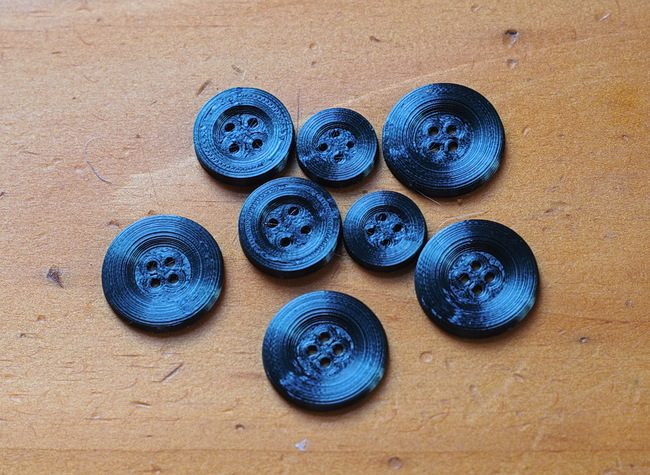
Buttons. A whole lot easier to print a button than to drive to Michael's or Walmart. In fact, for people who sew and work on sewing machines I can see a lot of good applications. Bag makers use a fair amount of hardware, snaps, strap adjusters, hooks and such. Some day digital patterns will come with 3d printer files so all those things can be made on the spot. Old fashioned machines that used cams for fancy stitches commonly are missing a few, and a viable business could be developed around 3d printing replacements. For that matter, custom cams could be crafted to produce a whole new range of stitches. The last of the great Italian-made Necchi machines that had the one nylon gear that gave out and couldn't be replaced could now be brought back to life.
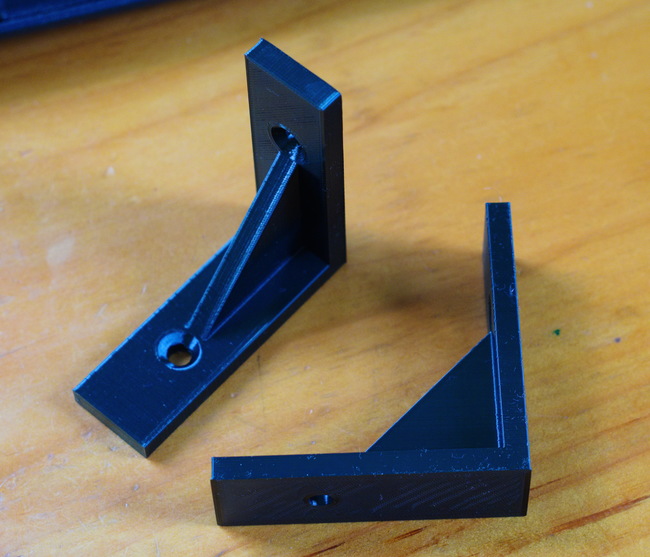
Brackets. Totally easy to customize for size and strength. Make a set of brackets to fit your space, not force the space to accomodate the available bracket. For that matter, print the shelf too. No need to drive to Home Depot.
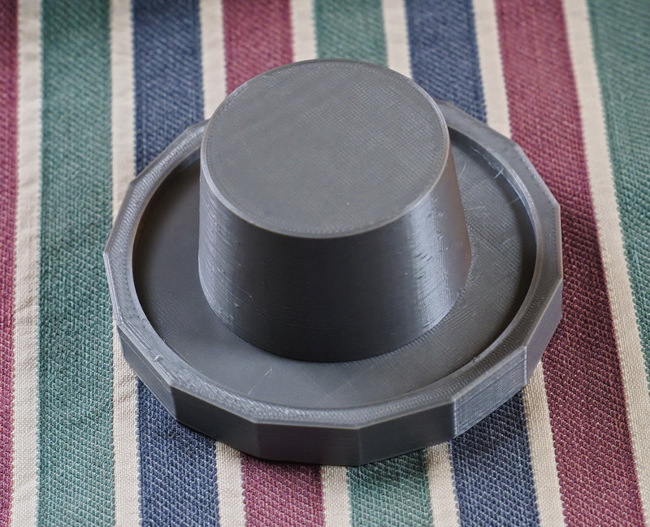
Mast Step Cap. Mark has a fleet of dinghies and Hobie Cats. One of them has a hole in the foredeck that the mast steps into. Simple physics determine that water and trash collect in the hole any time the mast is not stepped. One morning Mark idly emailed me with a sketch of a plug to cover the hole, along with some estimated dimensions, asking if it looked like the kind of thing that could be printed. Using OpenSCAD, I quickly drew something up, printed it and sent him a photo of the completed part that afternoon. Object lesson in rapid prototyping.
Worth Looking Up
Posted 06/17/25With the NWS predicting afternoon highs of 90 or over all week, here are some worthwhile web sites to check out when it's too hot to go outside.
Tedium. Mostly short articles and analysis of obscure "under the radar" news. For example, a recent post, Not Universal Enough, looks at Microsoft's latest efforts to set standards for USB ports. As is pointed out, Microsoft had a lot to do with creating the current USB mess, where a seemingly-innocuous port can have or not have any number of attributes. Sort of a "you broke it, you fix it" situation. Another post examines the case of Cheap Tickets, and early winner in airline deregulation started by a serial company founder who tried to finance a regional airline by flying in coke from Peru (he got caught).
Military History Visualized. Main focus is WWII tanks and artillery, but frequent videos on other subjects, such as From the Front to Field Hospital: German Medical Services WW2. The site operator does primary source research in the WWII German war archives. This is dry material but for the amateur historian, or someone like me who just has an interest in military history, it provides a lot of good background information that is better sourced than a lot of internet content.
3 Minutes of Aviation. Just as advertised - three minute videos of airplanes taking off, landing and flying. Mostly unusual situations. Giant Antonov Flies Low Final Turn.
Phillip Reeve. Camera lens reviews. Everything from classic rangefinder and slr kit all the way through the new wave of Chinese artisan glass from Laowa, TTArtisan and Viltrox. The sample photographs are worth a visit even if you aren't interested in the lenses.Blue Heron
Posted 06/01/25A great blue heron (or is it a tricolored heron, hard to say), fishing below a weir that holds back a settling pond in Little Washington. Super Takumar 200/4.
Max Velocity
Posted 05/19/25One of my favorite weather channels is Max Velocity. Max is a degreed meteorologist who specializes in analyzing and presenting weather data. On the evening of May 16th, I checked the site to see if there was any potential for threatening weather, and found Max live-streaming a severe tornado outbreak which had already killed people in the St. Louis area and was progressing across the width of Kentucky. I had sewing work to do, so I kept the live-stream playing in the background and checked in now and then. Tornadoes were popping up every few minutes, and a particularly dangerous one appeared a few miles west of Somerset, KY. Max explained to watchers how he interpreted the radar data, and suggested that any minute the National Weather Service would issue a PDS (particularly dangerous situation) warning - in other words, a tornado on the ground, take shelter immediately. That sets off the sirens and other alerts so people have a minute to take shelter. As time went on, Max became increasingly agitated and upset, asking watcher who had friends and relatives in Somerset to call them immediately to spread the alarm. Moments later, the tornado blasted through Somerset, wrecking buildings and leaving at least one dead. Shortly after, the NWS finally issued a warning, but by then the storm was approaching London, KY, and it was too late for many people to take shelter. At least 19 people died in London and the surrounding area.
Max was beside himself at the lack of warning from the NWS. Eventually a listener emailed him explaining that the local NWS facility is one of the worst understaffed in the country. Very likely nobody was on hand at the late evening hour when the storm came through. That's the price we pay for a lean, mean government. In truth, the NWS has been underfunded and understaffed for years. But there's no reason to make it worse.
Amenity
Posted 05/12/25A lot of new residential apartment buildings have gone up in Winston-Salem in the past ten years. To differentiate themselves and warrant top rental dollars, they have to offer amenities. Many have pools, balconies, ample parking and well-kept grounds. One thing that they don't all have is EV charging stations. The new complex on Cloverdale Hill does, and with the number of EVs I see driving around Ardmore, I expect it is a popular amenity. Legacy at Ardmore is the closest new apartment complex to Baptist Hospital with its well-paid and sophisticated labor force, the type of people who are adopting EVs at an increasing rate.
Still Fixing Shoes
Posted 05/10/25I've got a newer pair of Sperrys, but these Dexters are so much more comfortable I decided to resole them so that I can wear them for another year or two.
145 Rubber Full Sole 1 Pair - Size 12. Trace the shoe onto the sole and cut it to size with scissors. Clean the bottom of the shoe and attach the new sole with contact cement, let dry overnight. Bead all around the edges with Shoe Goo.
Mature Pine Forest
Posted 02/27/25During the 1930s the CCC planted some old, worn out farmland in the Jamestown area of Guilford County with loblolly pine. Over the years, local resource managers have conducted controlled burns, which simulate the effects of natural fires caused by lightning, to maintain a healthy environment for the trees. After 90 years, the result is an unusual mature pine forest of a type more frequently seen in coastal areas than in the Piedmont.
The photograph is a three-shot panorama created in Hugin. Click on it to open in its own window and click again to open full size, then indulge in the amazing detail that the panoramic technique provides.
Pizza
Posted 02/23/25I'm not going to claim this is a Chicago-style pizza, but it has some of the characteristics of one. Baked in a cast-iron skillet, it has a thick crust coated in olive oil, a layer of cheese, toppings, and then a very thick, highly-spiced sauce spooned judiciously over the top.
What Does it Mean to Run Out of Money in Retirement?
Posted 02/22/25The Center on Budget and Policy Priorities finds that 97 percent of older adults (aged 60 to 89) either receive Social Security or will receive it. So, effectively, nobody runs out of money in retirement. When people talk about running out of money in retirement, what they mean is having to live on Social Security.
Doctors are notorious for being terrible at personal finance. Dr. Jim Dahle is the exception to the rule. He publishes well-reasoned, thoughtful financial advice for his fellow physicians and other interested readers at his website, The White Coat Investor. In a recent post, What It Looks Like to Run Out of Money, he analyzes a story in the Wall Street Journal about four individuals living on Social Security and how they manage. The first, a professional chef, had a retirement plan of "I'll work until I die" and then suffered a heart issue at 63 that ended his career. The second, a social worker who developed polio as a child and became disabled in middle age, never made enough money to save. The third, widowed at 70, evidently got taken advantage of on her husband's death because of a lack of fundamental understanding of personal finance. The fourth, with a small retirement fund, opted to retire at 62. Dr. Dahle analyzes each of these cases with sympathy, looking at what each did right and what they could have done differently.
I would guess that none of the few people reading this will end up dependent wholely on Social Security. I just wish that I could get it in the hands of more people in their 20s, 30s, 40s and 50s who could benefit from the lessons of these people's lives.
Flooding Deep River
Posted 02/13/25Flooding on the Deep River in High Point earlier today, February 13th, 2025. Image is four frame panoramic stitched in Hugin. Click on the image to see in it's own tab, then click it from there to see full size.
Make Google Search Slightly Less Bad
Posted 02/13/25We all know that Google Search is bad and all the other engines are worse, but we can change one little default and make Google slightly better.
The AI summary at the top of the search results page is an irritant. Granted, the answer is less likely to be completely wrong now than it once was (notoriously, in answer to the question "How to make cheese stick to pizza", it used to suggest glue), but personally I am looking for a list of identified sources of information to choose from rather than a crowd-sourced speculation. Another issue with Google Search is that the results page is cluttered up with sales ads and other graphics, and the useful returns are pushed to the bottom of the page.
An observant person may have noticed that, after a search, at the top of the results page there will be a row of tabs for "All", "Video", "News" and so forth. There may be a tab for "Web", or "Web" may be listed under ":More". Try clicking on "Web", and you will find a clean, simple page of results, very similar to how Google Search looked ten years ago, before the cruft started accreting. It is more in line with what I want, so I started looking for a way to make the "Web" tab the default.
I found a clear, concise set of instructions at Tedium.co (yes, that's right, it's a .co domain. It's legit. It's officially the country-specific domain for Colombia, but is sometimes used by über-geeky people who use url shorteners like twitter’s http://t.co and godaddy’s http://x.co, etc). The instructions at Tedium.co are for the Vivaldi browser, so take that into consideration if you use Chrome or something else. So maybe read Tedium.co's directions and mine together and you should be able to figure it out.
Click on the three vertical dots at the top right of your Chrome browser, then click on Settings, then Search Engine. The current default engine will be listed, and below will be an option to "Manage search engines and site search". Choose that, then "Site Search", "Add", give it a name like "Google Web Only", a shortcut like "gw", then add this url:
https://www.google.com/search?q=%s&udm=14
Then click on the three vertical dots to the right and set it as default. This should promote it to the "Search Engines" section from "Site Search". At this point you should be good to go. Try opening a new tab and search for something. You should get a "Web" results page instead of an "All" page, without all the annoying cruft.Why is it so bloody complicated? I assume so that the great unwashed masses will continue to use the "All" page that produces more ad revenue, while the cognoscenti will just change it instead of abandoning Google Search altogether. So, unless you like cutting off your nose to spite your face, I suggest you make this configuration change before you adopt some utterly hopeless alternative like Bing, Ecosia, Gibiru, Baidu or Yandex.
Singer 7412
Posted 02/04/25I saw a listing on Craigslist for a Pfaff sewing machine cabinet, free, in High Point, conveniently located just a few blocks from Lars and Lex's house. I had read that Pfaff machines wouldn't fit Singer tables, so I decided to pick it up in case Joe needed it for his machine. It turned out to be for a modern Pfaff, with a strange top platform that lowered down into the case rather than a conventional drop down on hinges type. But it was a well-made box, so I took it, and it may be repurposed at some point.
Within two minutes of leaving with the cabinet, the phone rang, and it was the man who had given it to me. He said he had told his wife I fixed old sewing machines, and she replied that she had one that I could have. All he could tell me was that it was a Singer 7412 and it "didn't work".
Not having a clue as to what a Singer 7412 might be, I turned around and went back for it. To my disappointment, it was a modern electronic machine, but I hid my feelings, thanked them effusively and promised I would get it running and find a good home for it.
At home, I set it up, threaded it and gave it a try. It would run about six stitches, then beep a pattern and quit. Practically every other machine I have worked on had a seized mechanism or thread jam somewhere, so I went to work oiling and searching for stray threads, but didn't have any success.
An internet search turned up very little. A few people reported the same problem as mine, "runs a few stitches, beeps and quits". The consistency of the problem made it sound like it might be something in the electronic control system. I was inclined to believe it was a board, which I certainly couldn't fix. A couple of times I almost gave up and decided to give it to the mechanic at Triad Sew & Vac to part out or fix and donate. But after a few days I took a final look and noticed that what serves for a take-up spring looked bent or out of place. Close inspection showed that it had come unhooked on one end, and once I got it hooked back in place, the machine started sewing.
I've sewn a couple of projects with the machine, and while I can't say that I like it I will admit that it hasn't given me any serious trouble. It runs fast and straight, but the stitches are a little loose. The needle always goes to the up position when power is let off, a bit of a pain when turning corners. I expect this is so inexperienced users won't try to change the stitch with the needle down and bend it. The feed dog is unaggressive and has a hard time grabbing the fabric at the beginning of a seam, and the presser foot is stymied by even moderate humps. The two-bulb LED light is ludicrously dim, and one of the big selling points of the next model was that they had a third LED. But for someone who wants a modern electronic machine with lots of fancy stitches, this machine would be an option. For light-duty use it might last a few years.
What little I have been able to find indicates the 7412 model was built in 2005. There were a few more in the 74 sequence, and they were superseded by the Curvy models. In other words, an unremarkable series of machines from the low point of the Singer Sewing Machine Company. Around 2013 Singer introduced their Heavy Duty line which has done a bit to resurrect their reputation.
Flour
Posted 01/24/25U.S. Foods, a big restaurant supply company, runs a storefront in town offering bulk quantities of groceries at wholesale prices. Small restaurants and bakeries that can't place orders big enough for delivery can buy there, as can bigger clients who need something right away and can't wait for the next truck. The general public is welcome too. Prices are about the same as Sam's Club or Costco, but you don't need a membership.
I've been baking a lot of bread lately. Harris Teeter carries King Arthur whole wheat and bread flour but the prices have been creeping up. U.S. Foods' local store sells 50 pound bags of Sir Galahad and Sir Lancelot at about 50% of the price per pound at Harris Teeter. Today they were out of the Sir Lancelot, an ultra-high gluten white flour that I have been wanting to try, but they had plenty of the Sir Galahad, an all-purpose flour that is supposed to be easy to mix and strong enough to blend with whole wheat. I picked up a 50 pound bag for $32.
That's a lot of flour and should last me for several months. I wish I knew more bakers, but Marcia is the only one left, and I will give her 10 pounds to try out. Joe tipped me off that Lowe's and Home Depot sell food-grade 5 gallon buckets so I got one of them with a tight-fitting lid and packed 25 pounds in it. The remaining 15 pounds are in the refrigerator and freezer.
Some people think the King Arthur all-purpose flour sold in the grocery store in 5 pound bags is the same flour as the Sir Galahad, but while the gluten content is the same, the grocery store flour is a blend of spring and winter wheat, while the Sir Galahad is all winter wheat. I doubt if many people could tell the difference.
Superior Customer Service
Posted 01/20/25Gutermann Tera is my favorite sewing thread. Amazon doesn't sell it, but I found I could get it from Sailrite or Cleaner's Supply. I needed gray for a project, and Cleaner's Supply didn't stock it. Sailrite shipping rates are too high on small orders for my liking. I looked around online and found Wawak, which had my color and, like Cleaner's Supply, had a fixed $5.95 shipping rate on orders under $99.(Cleaner's Supply and Wawak are owned by the same man in Conklin, NY). I needed a few cones of Tera to fill out my inventory and decided to make a small order to see if I liked their service.
I placed my order which was shipped promptly with UPS, using their service that hands the package off to USPS for local delivery. UPS tracking showed the package got as far as Butner, NC where it was handed off on a Friday with delivery expected Monday.
Monday came and went with no package in my mailbox. Tuesday, likewise. When the mailman worked Miller Park Circle on Wednesday but didn't leave me a package, I sent Wawak a quick email, asking them to try to get a USPS shipping number so we could find my package.
The Wawak customer service rep was horrified that I was still waiting on my package and promised she would send a replacement out, Fedex two-day delivery, and assured me I would have my thread by Friday. I guess it is no surprise that USPS finally made delivery on Thursday, after Wawak had sent the replacement. Friday it came, and I contacted Wawak, explaining what had happened and asking to make arrangements to return the replacement package. On consideration, they told me to keep it to use, donate or give to friends. I thought that was right nice of them. I'll be ordering from them again. The extra cones I will give to Joe and Faith so they can try out the Tera and see if they like it as much as I do.
It Be Good
Posted 01/04/25It's known as pain perdu in New Orleans and other civilized locales, as french toast everywhere else. The cultural historians at Townsends tell us that it has been made to essentially the same recipe since the days of the Roman Empire. While modern Americans tend to eat it with pancake syrup, Colonials of the 18th Century commonly used a sauce made of equal parts butter, sugar and sherry. I tried it and it's pretty good.
Classic
Posted 01/01/25It's a December afternoon, but warm enough to motor about with the top down, and early enough to be home before the Prince of Darkness causes the headlights to fail. The paint looks sufficiently sorry to be original, but everything else looks great. The driver tells me the car belongs to his neighbor, who doesn't have time to take it out. Wait, why don't I have a neighbor like that? It's a Triumph TR6, for any of you benighted souls who can't remember the waning years of the classic British sports car. Super Tak 35/3.5.
The Real Thing
Posted 01/01/25Stuck in a little shopping development at 1701 N. Main Street in High Point you will find Granny's Donuts & Bakery, alongside the obligatory hair salon, computer repair store, nutrition shop and Papa John's. I'm not a knee-jerk "buy local" proponent, but I'd say this little shop deserves your business on sheer merit. The donuts are just better than Krispy Kreme's or Dunkin's, and the coffee is good too.
All photographs by Paul M. Clayton unless otherwise noted.
This is the current page, posts from 1/1/24 through today.
Older posts -
- 9/4/23 through 12/17/24.
- 7/22/22 through 8/22/23.
- 9/15/21 through 7/18/22.
- 10/27/20 through 9/14/21.
- 5/13/20 through 10/23/20
- 10/1/19 through 5/12/20
- 2/28/19 through 9/30/19
- 9/1/18 through 2/27/19
- 3/1/18 through 8/31/18
If you enjoy this site, I invite you to visit some of my other websites:
Copyright © 2018-2025 Paul M. Clayton
